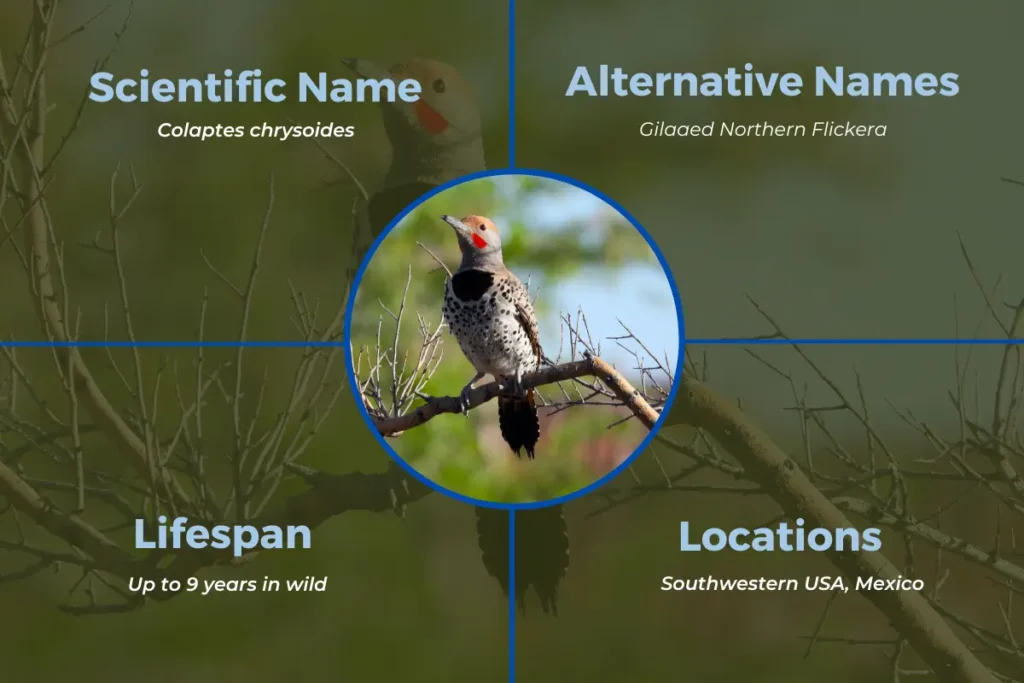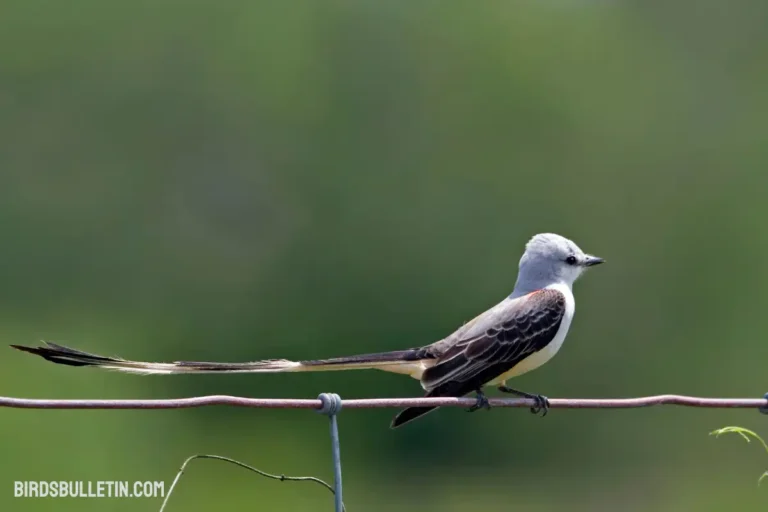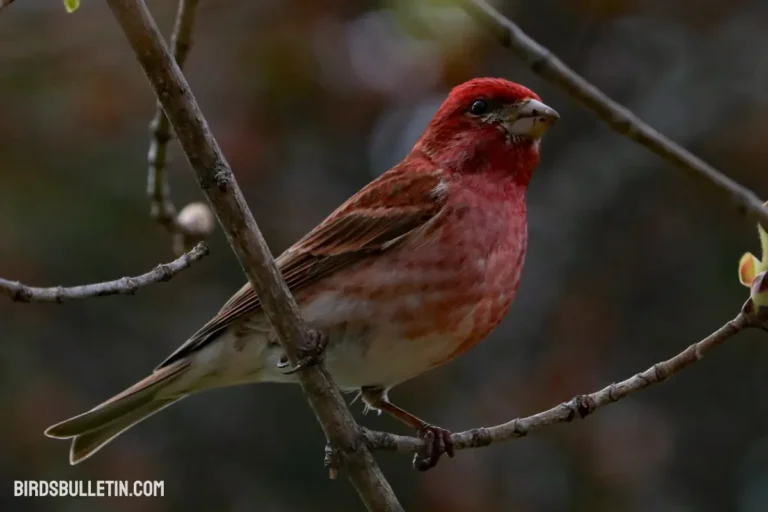Gilded Flicker: Behavior, Migration And More
The Gilded Flicker is a large woodpecker found in the southwestern United States and Mexico. It is recognized by its brownish-gray plumage on the upperparts, black crescent on the upper breast, and bold black and gold barred pattern on the underside.
The male has a red mustache stripe, while the female has a gray crown and nape. Males have brighter overall plumage while females are more muted. The striking golden wing and tail feathers help distinguish this species. They have long, curved bills adapted for probing into the ground.

Looking for more articles about bird overview:
Gilded Flicker Profile
Here is a table summarizing key facts about the Gilded Flicker:
| Fact | Details |
|---|---|
| Scientific Name | Colaptes chrysoides |
| Alternative Names | Gilded Northern Flicker |
| Color | Brownish-gray upperparts with black crescent on breast. Bold black and gold scalloped pattern below. Red mustache stripe on males. |
| Lifespan | Up to 9 years in wild |
| Wingspan | 16-18 inches |
| Weight | 3.2 to 5.3 oz |
| Size | 9-11 inches long |
| Diet | Mainly ants and beetles. Also eats seeds and fruit. |
| Breeding Season | April to May |
| Locations | Southwestern USA, Mexico |
| Threats | Habitat loss, climate change, pesticides |
Subspecies
Do you know how many subspecies are found in Gilded Flicker? There are four recognized subspecies of the gilded flicker:
01. The Cape gilded flicker (C. c. chrysoides): lives in southern part of Baja California.
02. The brown gilded flicker (C. c. brunnescens): Locates in northern and central California.
03. Mearns’ gilded flicker (C. c. mearnsi): Settles in southeastern California, Arizona and Mexico.
04. The Mexican gilded flicker (C. c. tenebrosus): Inhabits in northwestern Mexico.
Population
It has a relatively wide range but is considered uncommon throughout most of its territory. Population estimates indicate there are approximately 410,000 individuals across the species range.
Population trends appear to be stable and the Gilded Flicker has been classified as a species of Least Concern by the IUCN Red List since 2012.
Migration
The Gilded Flicker is non-migratory across most of its range. Individuals generally remain and breed in the same territory year-round. However, some northern populations in Arizona, New Mexico and western Texas make small-scale altitudinal movements
They shifting a few hundred kilometers south and to lower elevations in winter. The subspecies in Baja California is also thought to make local seasonal movements.
Behavior of Gilded Flicker
They use their stiff tails to prop themselves against tree trunks as they forage. They drum on wood both for territorial displays and to open up crevices. This bird exhibits typical woodpecker behaviors. Such as
Drumming: Males drum on surfaces with their bill to claim territories.
Anting: Use ants to maintain feathers and deter parasites.
Nesting: Nest in tree cavities, especially saguaro cacti in their desert habitat.
Foraging: Feed on the ground for ants and beetles but also eat fruits and seeds.
Gregarious: Outside breeding season they form large nomadic flocks.
Interactions with Humans
The unique appearance and behaviors of the Gilded Flicker make it popular for birdwatching. They readily visit feeders and can become accustomed to human presence.
However, habitat loss from development and agriculture threatens some populations. Pesticides can also accumulate in their prey items. Artificial nest boxes have helped stabilize declining numbers in Texas.
Conservation Status
This flicker has a large range and healthy overall population size. The IUCN Red List classifies it as a species of Least Concern. However, localized declines have occurred in parts of their range, especially Baja California.
Ongoing threats include habitat degradation and climate change impacts. Protection of woodland and riparian habitats is needed to ensure stability of Gilded Flicker populations into the future.
Frequently Asked Questions
1. Where are Gilded Flickers found?
Gilded Flickers are found across the southwestern United States (Arizona, New Mexico, Texas) and northern Mexico. Their range extends from southern Nevada in the west to western Louisiana in the east.
2. What Is Unique About Gilded Flickers?
The bold black and gold scalloped patterns on their undersides distinguish Gilded Flickers from other North American woodpecker species. They also utilize giant cacti like saguaros for nesting cavities, which is unusual among woodpeckers.
3. Why Are They Named “Gilded” Flickers?
The name refers to their bright golden-yellow wing and tail feathers, which appear gilded. The yellow shafting contrasts against their grayish plumage.
References
- Doster, R. and D. James. 2018. Gilded Flicker (Colaptes chrysoides), version 3.0. In Birds of the World (A. F. Poole and F. B. Gill, Editors). Cornell Lab of Ornithology, Ithaca, NY, USA.
- Graber, M., F.L. Carpenter, and R.T. Doster. 1983. The Southwestern Woodpecker in Riparian Woodlands: Populations, Food Habits, and Conservation. The Wilson Bulletin 95(1):13-30.
- National Audubon Society. 2022. Gilded Flicker. Available at: https://www.audubon.org/field-guide/bird/gilded-flicker Accessed October 21, 2023.







